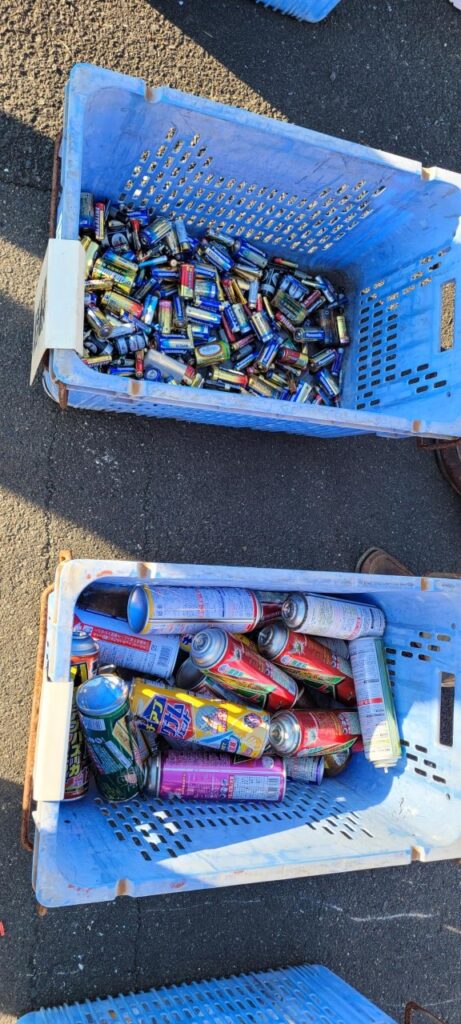OSAKI — Leading the rest of the global community in its recycling efforts is Osaki, a quaint rural town in southern Japan with an extensive and efficient recycling system built upon collective responsibility.
It used to have a landfill that was nearing its capacity well ahead of schedule, and no recycling system. Today, it is the top recycling town in Japan, and perhaps even the world.
Speaking to a group of visiting journalists from the Caribbean and the Pacific Islands, Osaki Town Office Resident and Environment Division assistant section chief and Environmental Measures Section manager Shizuto Takehara said the town was adamant about extending the life of the existing landfill site.
Through the formulation and implementation of rules, after multiple conversations between the local government, residents, and companies, the Osaki recycling system was created.
The government held 450 meetings with residents over the span of three months to directly address the issue, placing great emphasis on the short-term and long-term effects of inaction.
It presented three strategy plans: building a new incinerator facility, building a new landfill disposal site, or extending the life of the existing landfill site.
In these meetings, the government informed residents that building a new incinerator facility would be costly to the community as a whole, particularly with construction, maintenance, and operational costs.
The residents opposed the building of a new landfill disposal site, which ultimately led to the adoption of the third strategy plan: extending the life of the existing landfill site.
The government developed the recycling system, secured a final disposal site for waste collection, determined the date, time, place, and collection route of waste collection. It then decided what items to separate; appointed and guided regional leaders; and held environmental study sessions.
Today, annual trainings continue to be held for every regional leader.
The residents’ role in the system is perhaps the most crucial, because in the grand scheme of it all, a system can only be effective if implemented holistically.
The town teaches its residents and visitors that if they mix the waste, it is just waste, but if they separate the waste, it will be used as a valuable resource.
Residents must sort and separate waste from their homes, offices, and other spaces.
Recyclables must also be cleaned prior to being placed in designated bags with the household’s name written on them.
All households have a guide that teaches them how to properly sort and dispose their household garbage.
The waste collection company commissioned by the government receives the waste, transforming food waste into affordable compost, and inspecting recyclables to be processed and sent around the country as a resource.
The company’s staff and community leaders are trained to identify whether or not a household has properly sorted its garbage and recyclables.
If they are not properly sorted, measures will be taken to alleviate this, including directly contacting the household to address the matter.
Recent data from the waste collection shows that a majority of the town’s waste derives from grass, leaves, wood, and chopsticks, which are eventually used as compost.
The town also transforms collected cooking oil into biodiesel to power their waste collection vehicles.
All food waste is collected and sent to the town’s organic composting facility, to be mixed with the collected grass, leaves, wood, and chopsticks to make compost.
Local farmers, households, and businesses can then avail themselves of the compost to grow crops or to use as soil for other purposes.
Through separating and recycling waste, the town’s waste disposal cost per person is 2/3 the national average.
This saves about 90 million yen or $600,000 annually compared to the national average, funds that can be allocated to other industries, including health and education.
The Osaki town recycling system can also handle recyclable waste from neighboring municipalities, resulting in the creation of jobs, yet another contribution to the local economy.
It has also expanded its efforts with neighboring countries, such as Indonesia, which shares similar waste issues.
With its landfill life extended to at least another 50 years, and its recycling system continuing to expand, Osaki town in Kagoshima is now among the leading global partners in meeting the Sustainable Development Goals set by the United Nations.
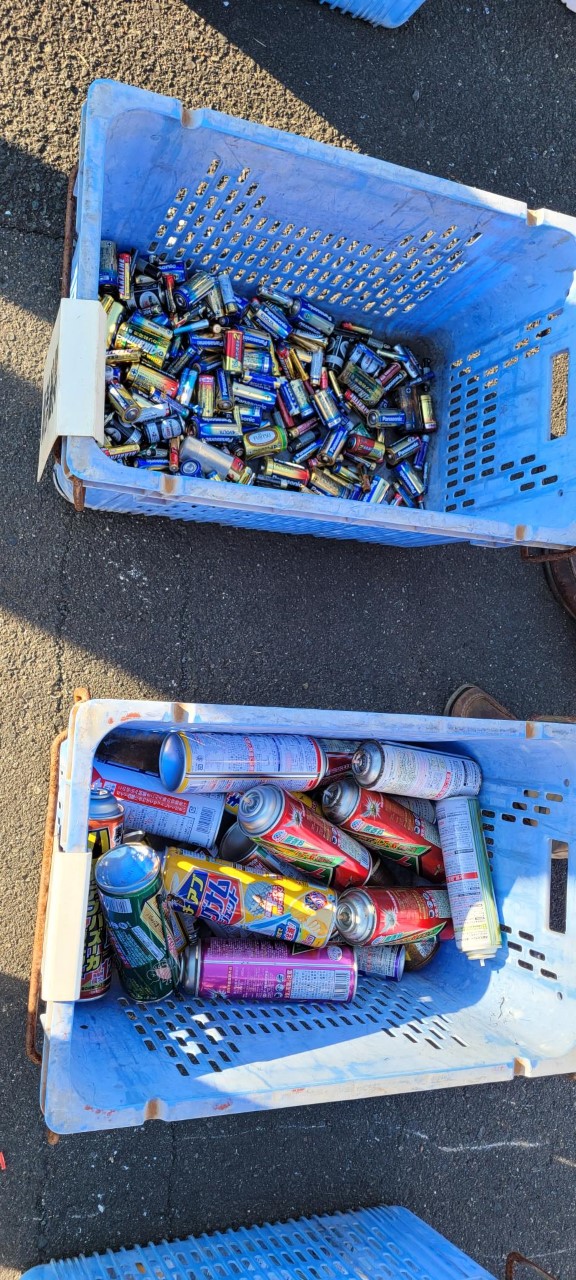
Recycled items, such as used batteries and canisters, are sorted into blue bins at designated sites across Osaki town.
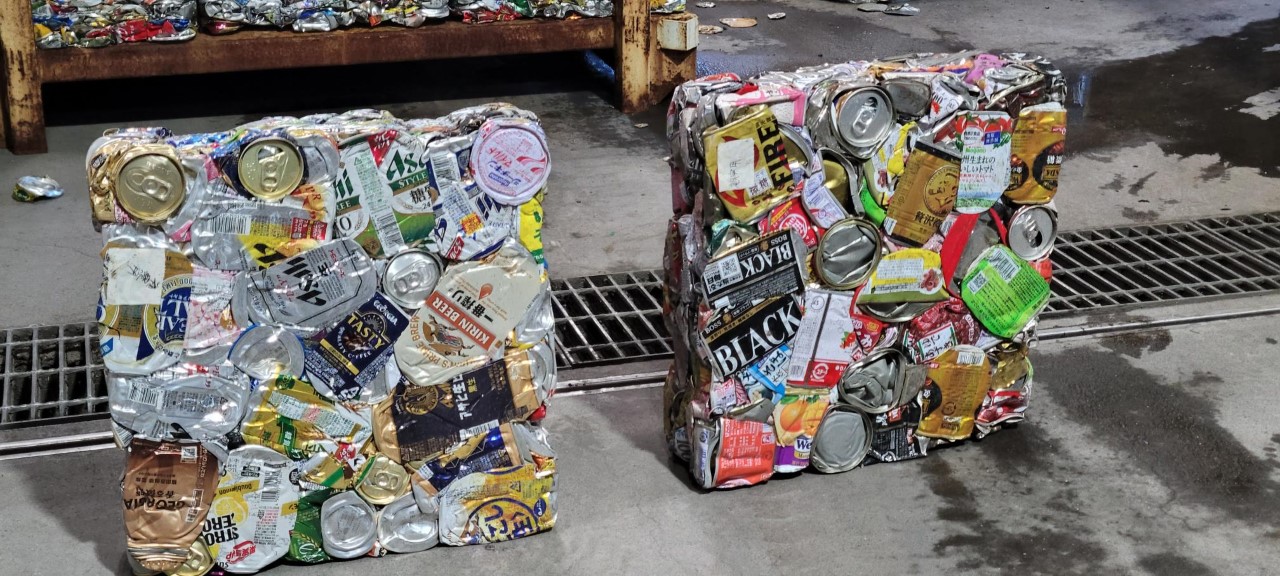
Recycled cans are compacted at a facility, later to be used as materials to form new products.
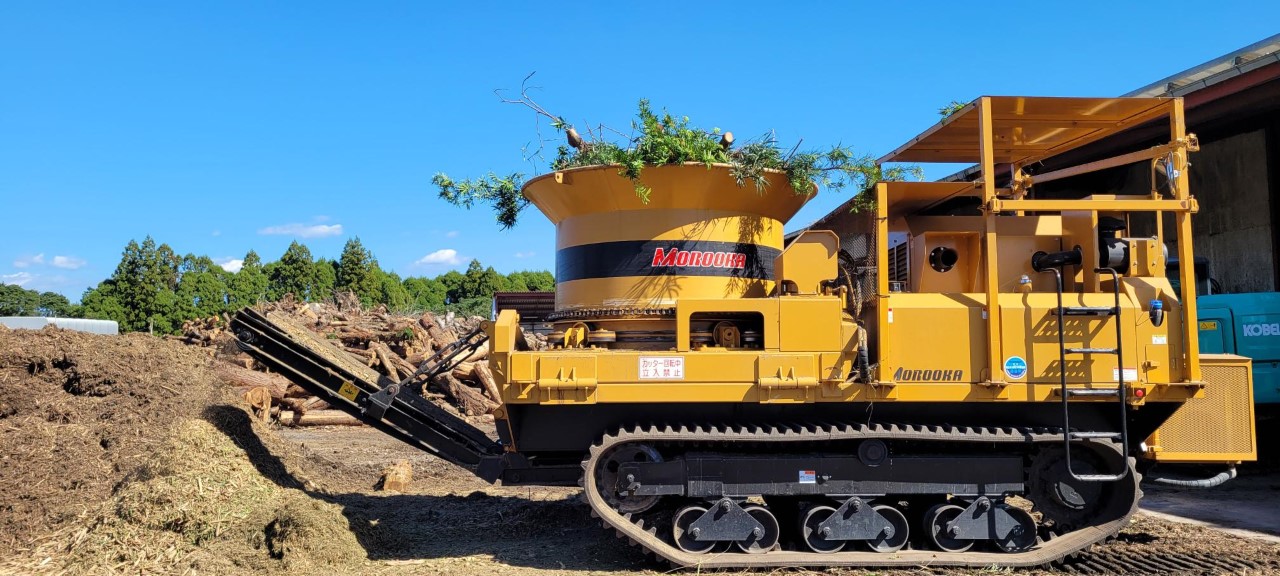
Grass, leaves, and wood are broken down through a machine. The material is then mixed with collected food waste to form compost.
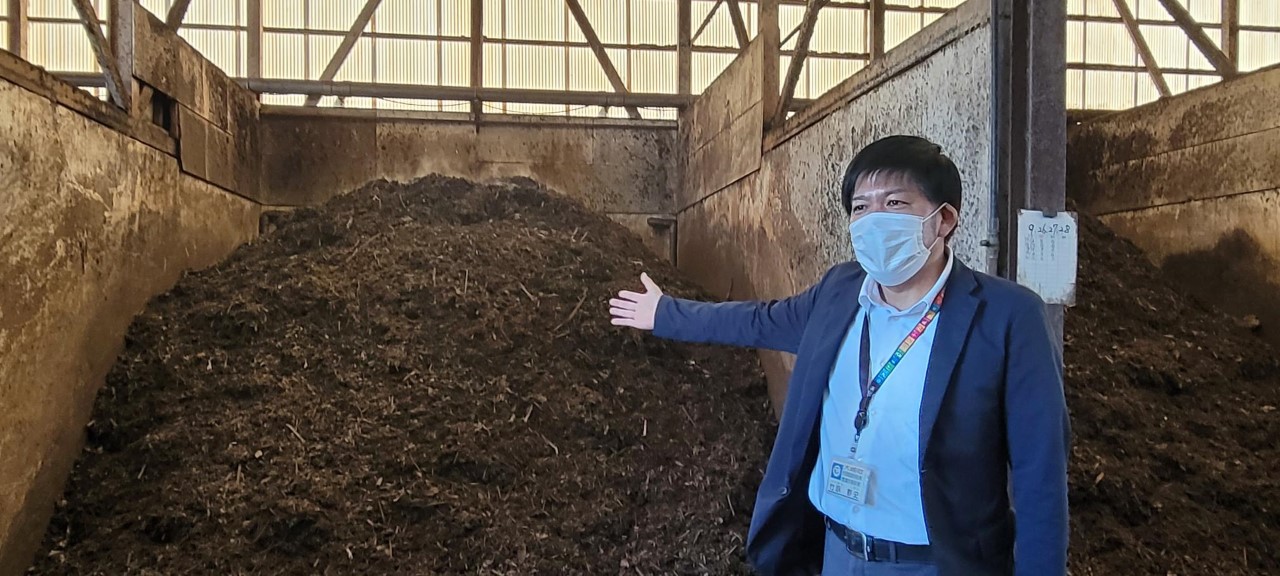
Osaki Town Office Resident and Environment Division assistant section chief and Environmental Measures Section manager Shizuto Takehara shows fermenting compost at the town’s composting facility.
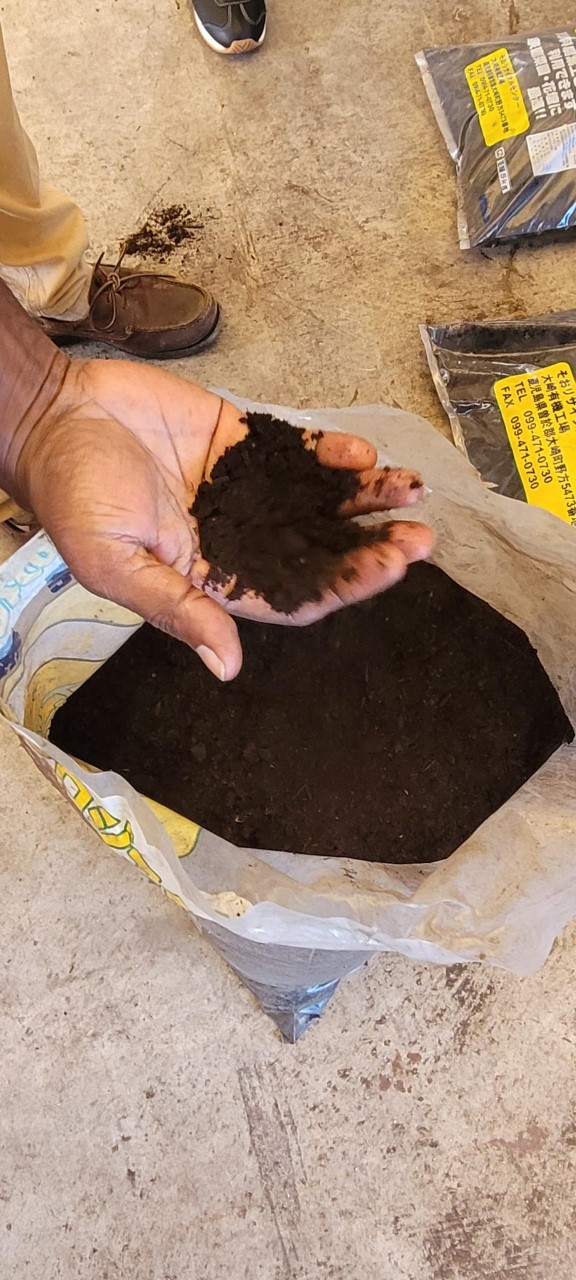
The final composting product is sold at an affordable price, with local farmers only paying 25% of market value.






